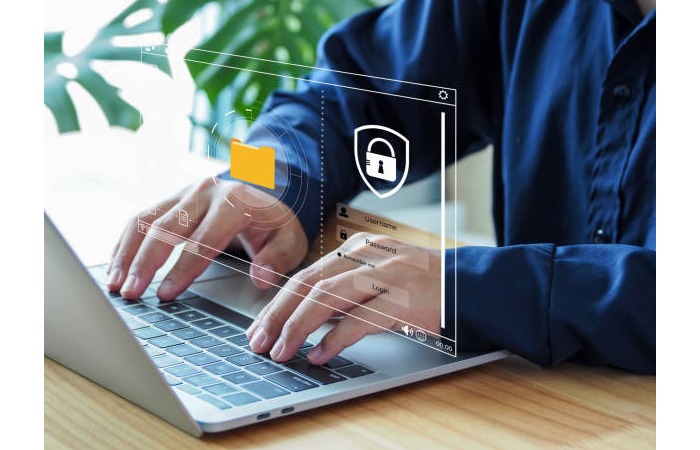No matter what organization we’re talking about, Essential Cybersecurity Measures, an online presence isn’t just about your website – your email, social media, cloud services, and other factors are also part of this overall element.
There are many benefits to this level of interconnectivity: ease of communication and operational efficiency are just two of the most obvious. However, this level of interconnectivity is also an enticing vector for potential cyber threats.
To protect your organization, you need to start from the back: an organizational culture that explains why security awareness is essential is an important first step. Practical strategies such as regularly updating security protocols, additional training, and implementing a comprehensive incident response plan are the second piece of the puzzle.
In addition, you’ll need to take advantage of tools such as firewalls, secure socket layer (SSL) encryption, and regularly updated antivirus software.
Even if you have all of this in place, your job isn’t done: there’s no “set it and forget it” approach, as cybersecurity is an ongoing battle. You’ll need to keep your eyes open, conduct regular checks, and always remain vigilant, but ultimately, the fight for cybersecurity can be won. Let’s take a closer look at how.
Understanding Cyber Threats Essential Cybersecurity Measures

Cyber threats are a general term: while they are all malicious activities, they are pretty diverse in their operations. Beyond a general overview of the potential security issues an agency may face in its operations, a more specific look at specific attack vectors is required.
Ransomware is one of the most common forms of cyber threats in modern business. This software works like this: once it has infiltrated your systems, it encrypts essential data, using it as leverage to extract a ransom in exchange for its release. A good practical example is the WannaCry ransomware outbreak 2017, which infected hundreds of thousands of systems worldwide.
Another common type of threat is phishing, which involves using seemingly legitimate messages to trick people into revealing or disclosing sensitive information. While it’s nice to think that we all recognise when someone is trying to scam us, the situation tells us that this is not the case: even seasoned security professionals and large companies like Facebook and Google are falling victim to phishing campaigns Essential Cybersecurity Measures.
Last but not least, distributed denial of service, or DDoS, attacks use a flood of traffic to overwhelm the infrastructure that websites rely on, making them inaccessible. These attacks cause significant downtime, equating to major business losses or a substantial erosion of consumer confidence.
A good example is the Mirai botnet, which has used IoT devices to launch several DDoS attacks over the past 8 years. One high-profile case is the DDoS attack on DNS provider Dyn, which resulted in the company losing 8% of its customers – the average cost of a DDoS attack for the affected organizations is $6,130 per minute.
This is not an exhaustive list – these are just some of the most common attacks online organizations face that should concern your agency.
Creating a Security-First Culture Essential Cybersecurity Measures
Technological tools and solutions are essential – this is a technology problem, but advocacy starts at home. To indeed stay one step ahead of the bad guys, your agency needs to have security in its DNA – in other words, security needs to be an integral part of your company or organizational culture.
Changes like these need to happen from the top down: they start with the C-suite and management. This shift to a security-first culture needs to be articulated, and everyone in the agency needs to understand right away that it’s now a priority Essential Cybersecurity Measures.
Once everyone is on board, it’s time to get practical: education is your greatest ally in combating cyber threats. Regularly scheduling and attending training sessions and seminars, or even investing in cybersecurity education for your employees, goes a long way to raising awareness.
Supplementing this with simulated attacks, phishing exercises, or other hands-on methods is another way to increase engagement and bring these often abstract risks closer to home.
This cultural shift also requires open communication: everyone should feel comfortable reporting potential threats, shortcomings, or even their mistakes and ideas on improving the agency’s cybersecurity posture.
Finally, reward and recognise positive behaviour—this will make your employees or colleagues feel valued and motivate them to take additional steps to improve your agency’s overall security.
Implementing a Robust Security Protocol

Now that we’ve touched on the overall threat landscape and the importance of workplace culture in achieving digital security, let’s take a moment to hone in on some practical strategies and approaches.
Encryption, which scrambles information, ensures that even if your data is somehow intercepted, it will remain undetectable (and ultimately unusable) to cyber criminals. For comprehensive and robust protection, encrypt your data at rest on your servers and devices and in transit.
Next are firewalls, which are tools, either hardware or software, that monitor all incoming and outgoing network traffic. This ability allows them to allow or block any detected data packets based on pre-defined rule sets. A good firewall goes a long way in preventing unauthorized access to your systems.
Next, let’s look at Secure Sockets Layer certificates. They authenticate the identity of a website, ensure secure and encrypted connections, and establish user trust that their data is safe in transit. You should use SSL certificates regardless of your agency’s industry, but they are an even more important consideration for agencies that handle sensitive information like payment card data.
However, nothing is static in cybersecurity—you must create a structure for regularly updating and maintaining overall security measures and protocols. This could include reviewing and revising agency policies, patching and updating software, or keeping your teams up to date with the latest developments in cybersecurity.
These methods require collaboration and a single view, often requiring using an agency platform for advanced workflow integration and data analytics.
Finally, strong access controls should be implemented using features like multi-factor authentication or MFA. These solutions require users to provide at least two-factor verification to access data or resources, meaning that the system is not compromised even if one security factor is breached.
Training and Incident Response Essential Cybersecurity Measures
A well-structured training program ensures that all employees know cybersecurity risks and best practices to mitigate these threats. This training should be ongoing and reflect the changing nature of cyber threats and the introduction of new technologies and procedures. Staff must recognise the signs of a cyber-attack and understand the protocols for reporting potential security incidents.
Equally important is the development and implementation of a comprehensive incident response plan. This plan summarises the procedures to follow during a security opening, minimalizing the impact and quickly restoring normal operations Essential Cybersecurity Measures.
It should include clear roles and tasks, communication strategies, and steps to contain, mitigate, and recover. Regular cyber-attack exercises and simulations can prepare the team for real-life scenarios, ensuring a quick and effective response to any incident.
By investing in ongoing training and creating a robust incident response system, agencies can significantly reduce their vulnerability to cyber-attacks and mitigate the impact of breaches should they occur. This proactive approach protects the agency’s assets and reputation and instils trust and security among its employees and clients.
Regular Audits and Adjustments

Regular audits and adjustments are critical to maintaining an agency’s cybersecurity posture.
Through periodic security audits, agencies can identify vulnerabilities in their IT infrastructure before attackers can exploit them. These audits should comprehensively assess the effectiveness of existing security measures, including policies, controls, and protocols.
To get the whole picture, you should also thoroughly analyse your IT infrastructure – hardware and software. For example, a firmware issue in older hardware could be a potential vulnerability, or something as simple as one of the 60,000+ free WordPress plugins could also become a backdoor for attackers if not properly secured.
Based on the findings, making any necessary adjustments to your security strategies is critical. This could include updating your software, reviewing access controls, or improving your data encryption methods. Regularly adjusting security measures in response to audit findings ensure that an agency’s cybersecurity defenses remain robust and can withstand evolving cyber threats.
Conclusion
Maintaining an agency’s online presence with comprehensive cybersecurity measures is an ongoing procedure that requires constant vigilance and adaptation.
From understanding the myriad cyber threats emerging in the digital space to building a culture of security within the organization, each step plays a critical role in strengthening defences.
Implementing robust security protocols, ensuring regular training and effective incident response, and conducting regular audits to ensure timely adjustments are essential strategies.
By implementing these practices, agencies can reduce the risk of cyber-attacks and create a resilient and secure digital environment. Continuous efforts and commitment to cybersecurity can win the fight against cyber threats.

